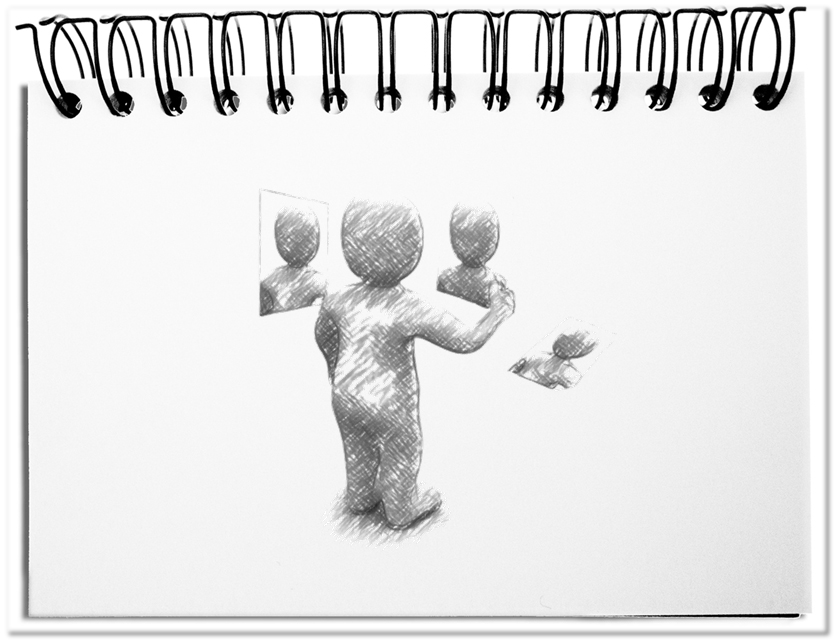The mirror on the wall does not bring the substantial characteristics to light, because the self-image only becomes incompletely visible in a mirror. There are the soft factors that describe the nature of a person or a group of people. These can only be grasped or observed with difficulties. In addition, they are mostly processed unconsciously – if you meet someone for the first time, or look at the person intuitively or spend time with its publications. The explicit format of the self-image is the today’s form of the mirror on the wall. Thus, you describe your own traits and those of other persons and groups.
These soft aspects of the Corporate Identity determine the social interaction with a target group and the co-operation within your own team.
Look at the target group in its environment. This provides indications of the convictions, the actual distribution of tasks and the affinity with a cultural system. The attributes can be determined in more detail by looking at publications and meetings.
The self-image is the basis for approaching the target group. By preparing the exchange of information, you avoid statements that contradict the attitudes of the audience. The detected traits and habits facilitate a more accurate formulation of your messages.
The mirror on the wall that is extended by the elements of the self-image provides the framework for a common self-understanding that fosters the social cohesion and co-operation.
Bottom line:Interaction within the own area and with others requires good expressions in words and pictures of your own character as well as the personality of counterparts.The self-image facilitates the description of the profiles.
Videos:
The self-image in a nutshell: http://ow.ly/wdjVo
Potential application areas: http://ow.ly/wdjWO

